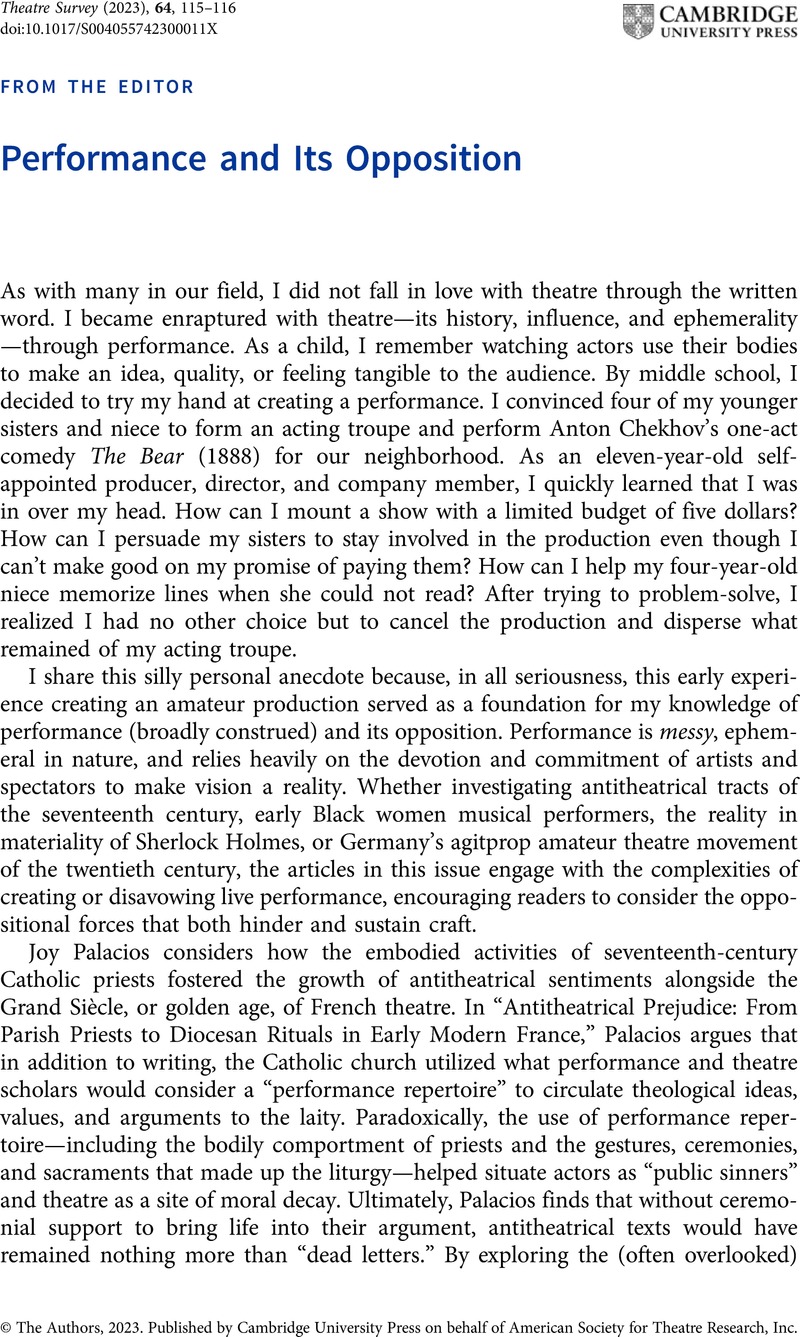No CrossRef data available.
Article contents
Performance and Its Opposition
Published online by Cambridge University Press: 09 August 2023
Abstract
An abstract is not available for this content so a preview has been provided. Please use the Get access link above for information on how to access this content.

Information
- Type
- From the Editor
- Information
- Copyright
- Copyright © The Authors, 2023. Published by Cambridge University Press on behalf of American Society for Theatre Research, Inc.

